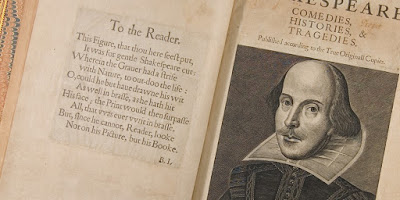BEWILDERING BLUNDERS
Mauve
Well imagine this – you’re in your all-serious mood, determined
and have your heart set on finding the perfect cure to malaria but all that remains, is a sludge of sticky, ugly looking piece of your attempt in your apparatus – frustrating, isn’t it? Well, apparently not in the case of chemist William Perkin, who now is accredited by the world for his irreplaceable discovery of the first synthetic dye.
Perkin was an 18-year old student at the Royal College of London
when he attempted to find an artificial alternative for quinine, an anti-malarial drug derived from tree barks which were highly expensive and time-consuming – despite countless tries, he wasn’t successful. However, during one of his experiments, he discovered a thick purple sludge; the color immediately caught his eye.
The product, made of carbon-rich tar from distilled coal took on an
interesting shade of purple, a color much in demand by the textile industry at the time. Perkin isolated the hue, which he named ‘mauve’ – he had discovered the world’s first synthetic dye!
He then dropped out of school and along with his father started a
factory to produce mauve-colored items – unsurprisingly, money flowed to them swiftly. But that was not it. Perkin’s discovery sent ripples across the globe inspiring numerous scientists and chemists. Within years, this revolution resulted in the production of many useful carbon compounds, including an actual artificial quinine.
Perkin didn’t achieve what he initially set out to, but he did go somewhere big. It wasn’t his mistake that took him there, it was his ability to understand it and make the best out of it. So embrace your mistakes, learn from them and inspire many more.
- Rtr. Hrishita Bapuram
“Light-bringing Slaves”
Fire, a deadly yet just as helpful element, which has been
mastered by man to let him dash his way up to the top of the food chain, blessing us mankind with light and warmth. But why is it that we have mastered it? Because we have the capability to ignite and extinguish it whenever we want, thereby controlling it. So, since man thought that it would be fun (and helpful, yes) to control fire, he started finding ways to create a spark easily. Nothing was really achieved until a British pharmacist tried to scrape his utensils off chemicals.
Although greed is regarded as one of the 7 deadly sins of this world, it did not deter the scientist Henning Brandt in the 17th
century from dreaming about gold all day, so he started finding ways to create precious gold from other metals, but in the process, he found something beyond extraordinary. He managed to extract pure phosphorus, studied its flammable properties and led other scientists to create wooden sticks coated with phosphorus.
Then later, the year 1826 saw John Walker mindlessly igniting a stick from a dried glob of chemicals in a utensil due to friction. He discovered flames bursting from the stick.
So greed, again drove him to sell such wooden sticks that created
fire on getting struck. These “light-bringing slaves” made of sticks were so effective that others copied it, improved on it and now they are conveniently called matchsticks. The Lundstrom brothers created safety matches that we use today but had also misplaced the sample of red phosphorus matches for some time. These tools for starting a fire are used by one and all, in temples,
kitchens and by blacksmiths to pray, cook and construct respectively and also by smokers to destruct.
It’s amazing how such petty yet such important things have been created all by mistake. ‘Mistake’ that is defined as an act which is misguided or wrong, has unknowingly guided these men to create matchsticks that are so significant in today’s times. Men were in the quest for something else, but found something so different, yet so life-changing, productive and profitable. Sometimes, faux pas may leave you with awesome discoveries, so a word of advice: don’t be afraid of making mistakes.
It’s amazing how such petty yet such important things have been created all by mistake. ‘Mistake’ that is defined as an act which is misguided or wrong, has unknowingly guided these men to create matchsticks that are so significant in today’s times. Men were in the quest for something else, but found something so different, yet so life-changing, productive and profitable. Sometimes, faux pas may leave you with awesome discoveries, so a word of advice: don’t be afraid of making mistakes.
- Rtr. Pooja Sharma.

Puh-tae-toe/Poh-tah-toe
Frankly, you would be surprised to know that one of the world’s
greatest discoveries was accidental. I am not talking about something as trivial as fire or as revolutionary as sliced bread. What I am talking about is crispy, salty and thin. Surely you can guess it. It is something everyone enjoys.
Well, it is potato chips. What a real no-brainer!
In 1853, an African-American man named George Crum was the one who started this. He worked at a diner. One particular customer ordered French Fries. Now, we’ve all met that one person who always find the food ‘not to their liking’. When the fries came, he complained of the fries being too large, soggy and lacking salt. In an attempt to satiate his customer, George made a fresh batch of thinner, crispier and salty fries but these too fell to the same fate.
What a waste of fries if you ask me but whatever. It did turn out for the better since the next batch was made ridiculously thin, crispy and salty (for fries). Convinced that the fries would put off the customer, he served the fries with great expectations (this sentence is a figment of my imagination and I, by no means claim that it is true). Surprisingly enough, he liked them (no surprises there).
Well, folks that were how potato chips were made (a small step for
George and a giant leap for mankind). All of us would love more potato chips in one packet but honestly let’s face the truth. The way the companies pack chips nowadays it would be cheaper to fill trucks with 18-karat diamonds than chips. It would be easier to fill oxygen cylinders for NASA for the next ten years than give them enough chips for one year. An adequate amount of chips in a packet may seem like a far-off goal but ‘I have a dream…’
-Rtr. Deval Savla
“Taste the feeling”
In this world of inventions, masterpieces and achievements, there is
a small percentage of extremely successful inventions which were never meant to be what they are today. The attempt was to create something else but a mistake resulted in the creation of these magnanimous successes, these million dollar companies and which are such an important part of the world today, of our lives today. Is there anyone who hasn’t heard of the well-known brand called Coca-Cola?
Today, it is a taken for a granted beverage, an always available drink. Believe it or not, there was a world which existed without it.
The worldwide renowned soft drink, which has managed to leave its mark on the world by opening production houses in Asia Pacific, Europe, Middle East and Africa, Latin America, North America etc, so as to make the much cherished soft drink easily available almost everywhere in the world is an example of one such blunder.
In 1886, a pharmacist named John Pemberton invented Coca-Cola. He was wounded in the Civil War, where he served as a lieutenant colonel. He became addicted to morphine to help ease the pain. Thus, he began experimenting with coca and coca wines in order to search for an opium-free alternative, eventually creating the Pemberton’s French Wine Coca. Ironically enough, this was the formula that gave birth to Coca-Cola. After producing the syrup for coca cola (which he formulated by trial and error), he took it to a pharmacy shop nearby (called Jacob’s Pharmacy) where it was sampled and deemed to be “excellent.” It was kept for sale on the counter at five cents a glass as a soda fountain drink. Carbonated water was teamed with the syrup to give rise to what the world calls Coca-Cola today. The drink was termed to be “Delicious And Refreshing” a slogan which echoes ever so often with “Coca-Cola.”
Thus, the accidental discovery resulted in the creation of something which led to a very promising future. The mistake which was more profitable than anyone else could’ve ever imagined. The bewildering blunder that wasn’t meant to be, but still was.
-Rtr. Arpita Ramdoss
Sticky Reminders
Be it for a presentation, for your grocery list, for the number of the pretty girl at the bar last night or as bookmarks, sticky notes always have you back. Post-It notes have been a part of our lives for as long as we can remember. You'll be surprised to know that these clingy helpers were the result of a chemical blunder.
In 1968, Dr. Silver Spencer, a chemist at 3M Company, wanted to create a strong adhesive used for building planes but ended up with a weak one instead. The company found no use for it but his friend Art Fry thought it could solve one of his issues. Mr. Fry kept losing his place in his hymn book because the bookmarks kept falling off. So he decided to experiment with them with Silver’s adhesive and voila! A post-it was born.
Now things could have gone differently. Dr. Silver could have gotten frustrated and thrown his creation away. That way, the company would never have kept it in storage and Mr. Fry would keep forgetting the pages of his hymns. But instead, this mishap was made into a successful product and launched under the original name of ‘Press n’ Peel’ by 3M in 1977, growing into a global phenomenon. This only goes to show that not every mistake counts as a failure. It’s always another ‘Now I know what not to do’ lesson, and sometimes it can even be the start of something small, quirky and yellow.
- Rtr. Sakshi Desai
Origins of a Chocolate Favourite
A worldwide favourite, the chocolate chip cookie, is a buttery mix of chocolate flavoured dough with small bits of actual chocolate- a pair as iconic as Jack and Rose. They were invented in America in the late 1930’s. Unlike other American staples like the hot dog and the milkshake, the creator of these cookies is quite popular. Ruth Wakefield, who ran the popular Toll House restaurant in Whitman, Massachusetts, with her husband, Kenneth, from 1930 to 1967, brought the Toll House Chocolate Crunch Cookie into this world.
The original recipe has been tweaked a lot over the years but the basis of all the varied recipes to make chocolate chip cookies remains the same. It was originally created as an accompaniment to ice cream. It became celebrated so quickly that a famous radio jockey featured it on her radio show within just a year or two of its existence. The immense popularity that the cookies garnered at their introductory phase, remains unparallaled.
While the who and when of the invention of these cookies is quite known, the how and why remains unbeknownst to many. Various myths about their ‘accidental’ creation have been around for a very long time. The most frequently reproduced story is that Wakefield unexpectedly ran out of nuts for a regular ice-cream cookie recipe and, in desperation, replaced them with chunks chopped out of a bar of Nestle bittersweet chocolate. (A variation of this tale has Wakefield substituting the chips after running out of bakers’ chocolate) None of these are true. Ruth chopped up a block of Nestlé semi-sweet chocolate that had been given to her by Andrew Nestlé of the Nestlé Company. She had expected the chocolate to melt and disperse through the cookie dough as regular baking chocolate would. Instead, the chocolate pieces retained their individual form, softening to a moist, gooey melt, and the world had its first known chocolate chip cookie.
The cookies became much loved by everyone in that town and her restaurent made immense profit. As word started to spread across states, an invention that had started out as just an attempt to serve a new variety to the same old customers, soon, became a rage all over the country. In March 1939, Wakefield gave Nestle her recipe and the right to use the Toll House Name in an unbelievable bargain of just one dollar!
Wakefield’s cookie was the perfect antidote to the Great Depression. Ingesting a warm chocolate-chip cookie offered the eaters a brief respite from their quotidian woe. America’s entry into the Second World War only enhanced the popularity of Wakefield’s creation. Toll House cookies were a common constituent in care packages shipped to American soldiers overseas.
In the post war period, chocolate chip cookies began to be mass produced and manufactured in large quantities.
The Toll House restaurant burned down spectacularly on New Year’s Eve in 1984 and the spot is now home to a Wendy’s. The authorities in Whitman required the fast-food restaurant to include a small museum on Wakefield and the Toll House on its premises. Next time you’re in the same area, drop in and have a look. But, whatever you do, don’t order a cookie. Instead, bake a batch from scratch when you get home!
-Rtr. Esha Mehta
Preface
Mistakes! Mistakes! Mistakes!!
Who doesn’t make them? They’re almost our second skin, aren’t they? The more we try to avoid them, the more they follow us around – could be that little error in your application that ruined it for you, a minute calculation error in your math paper, or simply a misjudgment in your holiday planning which put you in trouble with your attendance!
But on the other hand, we’ve managed to put forward for y’all, some interesting mistakes which changed the world. We have a collection of those tales, that would’ve been another of those frustrating mistakes like any of ours, but thanks to these clever geniuses, who somehow managed to instill these errors into something productive, creating indispensable products of our lives today.
So here’s celebrating these successful wrecks and to the many, many more mistakes we make in our years to come!
They say you learn from your mistakes. So why not make as many as we can? Who knows, we might become the genius of tomorrow.








Comments
Post a Comment